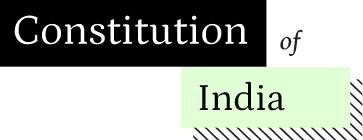The object of these amendments is to remove certain patent and glaring defects in the jurisdiction of the High Court to get rid of anomalies and to provide an adequate and effective machinery for the enforcement of fundamental rights. Clause (a) of the amendment deals with prerogative writs or any substituted remedies therefore. The reference to substituted remedies is to enable a simple remedy by application for writs in accordance with the procedure obtaining in England under recent enactment’s. Under the law as it stands the High Courts of Calcutta, Bombay and Madras have the right to issue prerogative writs within the limits of their ordinary original jurisdiction. The remedy by application was substituted for the Writ of Mandamus by the Specific Relief Act, but the remedy is confined to the presidency towns. There is no conceivable reason why a citizen outside the limits of the presidency town should be left to the dilatory remedy of an ordinary suit while a remedy by application to the High Court is available to a resident of the presidency town. In regard to the prerogative writ of habeas corpus, the Criminal Procedure Coda has enabled application of substituted remedy for habeas corpus being available throughout the appellate jurisdiction of the High Court. The Privy Council has recently held that the remedy by way of Certiorari enabling the High Court to remedy proceedings of judicial and quasi-judicial bodies acting in excess of jurisdiction is available within the presidency town. Clause (a) when passed will enable all the High Courts in the Union of Indian to exercise the jurisdiction in regard to these matters throughout the area subject to their appellate jurisdiction. The Clause also will provide an effective-remedy for the fundamental rights guaranteed under the constitution. Clause (b) is intended to remedy an anomaly in the jurisdiction of the High Court. The anomaly goes back to the days of Warren Hastings. Under the law as it stands there is no bar even to a district munsiff entertaining a suit which involved a right to revenue, but the High Courts are debarred from entertaining such suits. The other day the Federal Court while upholding the right of a litigant in every respect ruled that the suit field in the High Court was liable to be dismissed on the technical ground based on section 226 of the Government of India Act. The need for removing this bar on the jurisdiction of the High Court is universally felt by the profession and has been emphasisted in several statements of the High Courts in India. The last clause is intended to remedy a defect introduced by the Act of 1935 under which the High Courts were deprived of the powers of superintendence in certain respects- over the subordinate courts. This amendment I venture to state, has the universal support of the profession and I commend it your acceptance.
